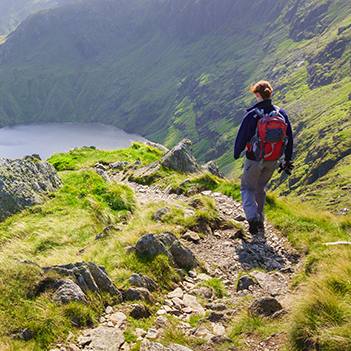Thomas Hardy
Thomas Hardy is generally regarded as the most famous literary figure from Dorset. He was born in 1840 in Dorset at a cottage in Higher Bockhampton, just outside Dorchester. He went to school in Dorchester, and became an architect. He continued to live in Bockhampton, apart from a period in London in the 1860s, until he married for the first time in 1874. In 1885 he moved into Max Gate just outside Dorchester, a house which he designed himself. He died in 1928.
He first achieved fame in 1874 with his novel Far from the Madding Crowd, which introduced the fictional Wessex for the first time, though an earlier novel Under the Greenwood Tree is based in the Wessex village of Mellstock. His other most famous novels are The Return of the Native (1878), The Mayor of Casterbridge (1886), The Woodlanders (1887), Tess of the d'Urbervilles (1891), and Jude the Obscure (1895), all set in Wessex.
Many of the places in Hardy’s Wessex are easily identified as corresponding to real places in Dorset. Some of the places on or close to the 100 route include Abbot's-Cernel (Cerne Abbas), Budmouth (Weymouth), Casterbridge (Dorchester), Emminster (Beaminster), Evershead (Evershot), Mellstock (Stinsford and Higher & Lower Bockhampton), Middleton Abbey (Milton Abbey), Overcombe (Sutton Poyntz), Po'sham (Portesham), and Weatherbury (Puddletown).
There are five principal sites with connections to Thomas Hardy. They are:
- Hardy’s Cottage, Higher Bockhampton. Hardy lived here from his birth for 22 years and again until he finally left home at the age of 34. Nothing remains of the original furnishings, but the National Trust, which now owns it, have restored the interior to its appearance when Hardy lived there. At one point seven members of the family lived there, grandmother, parents, and four children, which by modern standards must have made it very crowded It’s open to the public in summer.
- Max Gate. Designed by Hardy and built in 1883/4. No one could call it a beautiful house, but Hardy did spend 35 years there so he must have been happy with it. As with Hardy’s Cottage, almost everything that Hardy owned has been dispersed, but the National Trust have furnished appropriately. Open to the public in summer.
- Stinsford Church. A pretty country church with an atmospheric churchyard. Hardy’s novel Under the Greenwood Tree is based in Stinsford, called Mellstock in the novel. Hardy’s heart (his ashes are in Westminster Abbey), and his two wives are buried here. The Poet Laureate Cecil Day Lewis is buried close by.
- Dorset County Museum. If you want to see things that Hardy actually owned, this is the place you must go. The Museum has a reconstruction of Hardy’s study and all the furniture, books and personal possessions in the room originally belonged to Hardy. Open all year round. The rest of the museum is well worth a look too.
- Dorchester Top-o-Town statue. Placed here in 1931, it is a surprisingly low key monument to Dorchester’s most famous son. A statue of the poet William Barnes occupies pole position in the middle of Dorchester.
The Thomas Hardy Society publishes notes for Hardy-related walks in the area.
Thislinkis to an interactive map showing the places of interest.




